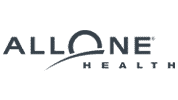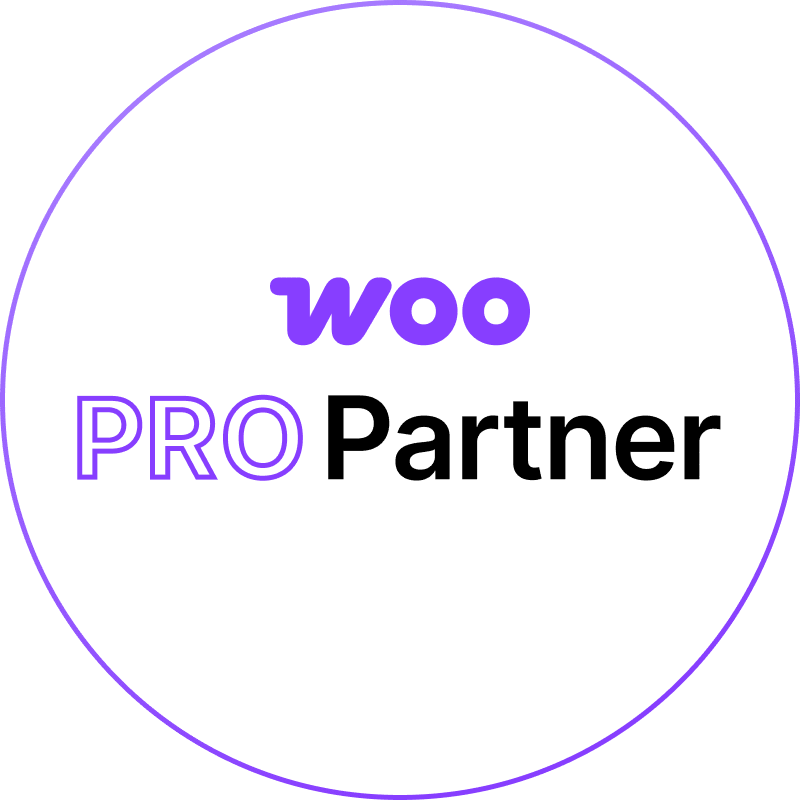The Ultimate Guide to Local SEO: How to Dominate Your Market
Local SEO is a powerful strategy designed to help businesses improve their visibility in local search results. Unlike general SEO, which focuses on optimizing for global or national audiences, local SEO targets users who are searching for services or products within a specific geographic area. This makes it an essential tool for businesses such as restaurants, retail stores, service providers, and even online companies that want to attract customers in a particular region.
The importance of local SEO has grown significantly in recent years, largely due to the rise of mobile searches. According to Google, nearly half of all searches have a local intent, such as “plumber near me” or “best pizza in New York.” These users are often looking for immediate solutions, making it critical for businesses to appear prominently in search results.
Local SEO involves a combination of strategies, from optimizing your Google Business Profile to creating location-specific content. When done correctly, it can drive more foot traffic to physical locations, increase online visibility, and build a stronger connection with your community. Whether you’re managing your strategy in-house or partnering with a local SEO agency, mastering local SEO is key to staying ahead in your market.
Understanding the Local Search Ecosystem
The local search ecosystem is a network of platforms, directories, and user-generated content that collectively influence how your business appears in local search results. Google My Business (now Google Business Profile) is at the center of this ecosystem, serving as the primary tool for managing your presence on Google Maps and local search results.
When a user performs a local search, Google’s algorithm considers several factors to determine which businesses to display. These factors include proximity to the searcher, relevance to the query, and the prominence of the business in terms of reviews, backlinks, and citations. Ensuring your business is accurately represented across the local search ecosystem is critical for success.
Local directories such as Yelp, TripAdvisor, and industry-specific platforms also play an important role. Consistent information—such as your business name, address, and phone number (NAP)—across these directories helps establish trust with both users and search engines. Inconsistent or outdated information can harm your rankings and frustrate potential customers.
Another crucial component of the local search ecosystem is user-generated content, such as reviews and photos. Encouraging customers to leave positive reviews and share their experiences not only boosts your credibility but also improves your visibility in local search results. A strong presence across the local search ecosystem ensures that your business stands out when users are searching for services you offer.
Setting Up and Optimizing Your Google Business Profile
Google Business Profile (GBP) is the foundation of any successful local SEO strategy. This free tool allows businesses to manage how they appear in Google Maps and local search results, providing users with essential information such as operating hours, contact details, and customer reviews. Setting up and optimizing your GBP profile is one of the most impactful steps you can take to dominate your local market.
Start by claiming your Google Business Profile if you haven’t already. This involves verifying your business with Google, which may require entering a code sent to your physical address or phone number. Once your profile is verified, focus on completing all fields with accurate and detailed information.
Your business name, address, and phone number should match exactly with what’s listed on your website and other directories. Add high-quality photos of your location, products, and services to make your profile visually appealing. Including categories that accurately describe your business helps users find you when searching for specific services.
Regular updates to your GBP profile are essential. Post announcements, offers, and events to keep your profile active and engaging. Respond to customer reviews, both positive and negative, to show that you value feedback and are committed to improving their experience.
Optimizing your Google Business Profile ensures that your business appears in the coveted local pack—the set of three businesses displayed at the top of local search results. By providing detailed, accurate, and engaging information, you make it easier for users to choose your business over competitors.
Importance of Local Keywords
Local keywords are the backbone of a successful local SEO strategy. These are search terms that include specific geographic modifiers, such as city names, neighborhoods, or phrases like “near me.” By targeting local keywords, businesses can ensure their website appears in front of users searching for products or services within a particular area.
Conducting thorough keyword research is the first step. Tools like Google Keyword Planner, Ahrefs, or SEMrush can help identify high-traffic, location-specific keywords that align with your business. For example, a bakery in Los Angeles might target phrases like “custom cakes in Los Angeles” or “best cupcakes near me.” These keywords cater to users who are actively looking for local options.
Incorporating these keywords into your website’s content, meta titles, descriptions, and headers ensures that search engines recognize the relevance of your site to local queries. For example, a law firm specializing in personal injury cases could create a blog titled “How to Choose the Best Personal Injury Lawyer in Austin” to capture local traffic.
Additionally, local keywords should be used in Google Business Profile posts, social media updates, and online directory listings to reinforce your local presence. By focusing on relevant, location-specific terms, you can attract users who are ready to convert into customers.
Building and Managing Local Citations
Local citations are online mentions of your business that include your name, address, and phone number (NAP). These citations appear in directories, review sites, and social platforms, and they play a crucial role in local SEO. Consistency in your citations builds trust with search engines and improves your visibility in local search results.
Start by ensuring your NAP information is accurate and consistent across all platforms. Discrepancies, such as a different phone number or outdated address, can confuse search engines and users, potentially hurting your rankings. Tools like Moz Local or Yext can help automate and manage citations to maintain accuracy.
Submit your business information to major directories like Yelp, TripAdvisor, and industry-specific platforms. For example, a hotel should list itself on platforms like Expedia or Booking.com, while a fitness studio might use ClassPass or Mindbody. These listings improve your online presence and provide additional opportunities for users to discover your business.
It’s also essential to monitor and update citations regularly. As your business grows or changes (e.g., new locations, updated services), ensure these changes are reflected across all directories. Active management of local citations reinforces your credibility and ensures your business remains visible to potential customers.
Leveraging Reviews and Reputation Management
Customer reviews are a powerful tool in local SEO, influencing both rankings and user trust. Positive reviews signal to search engines that your business is reputable and relevant, while also encouraging potential customers to choose your services over competitors.
Start by encouraging satisfied customers to leave reviews on platforms like Google, Yelp, and Facebook. The more reviews you have, the stronger your credibility becomes. Simple strategies like follow-up emails, QR codes linking to review pages, or in-store signage can make it easy for customers to provide feedback.
Responding to reviews is equally important. Thank customers for positive feedback to show appreciation, and address negative reviews professionally to demonstrate your commitment to resolving issues. For instance, a restaurant receiving a negative review about slow service could respond with, “We apologize for your experience and are working to improve. Please contact us directly so we can make it right.”
Reviews also offer an opportunity to include local keywords naturally. For example, responding to a review with, “Thank you for choosing our custom cakes in Dallas!” reinforces your relevance to local search queries.
In addition to Google, monitor reviews on other platforms where your business is listed. Maintaining a strong reputation across all channels ensures your brand is consistently viewed as trustworthy and reliable.
Creating Locally Focused Content
Content tailored to your local audience is a cornerstone of an effective local SEO strategy. By addressing the specific needs, interests, and questions of your community, you not only attract local traffic but also establish your business as a trusted resource. Localized content helps search engines understand your relevance to specific geographic areas, boosting your visibility in local search results.
One way to create impactful local content is by writing blog posts or articles that address community-specific topics. For example, a real estate agency could publish posts like “Top Neighborhoods for First-Time Homebuyers in Denver” or “How to Navigate the Denver Housing Market in 2025.” These pieces resonate with local audiences while incorporating relevant keywords.
Event-based content is another effective approach. Highlighting local events, sponsoring community activities, or sharing guides like “10 Must-Visit Festivals in Austin This Summer” can attract both search traffic and social shares. Additionally, integrating customer stories or testimonials adds authenticity to your content while showcasing your local presence.
Don’t overlook location-specific landing pages. A chain of fitness centers, for instance, might create individual pages for each location, optimized for keywords like “Best Gym in Miami” or “Affordable Personal Training in San Diego.” These pages provide detailed information tailored to each audience, improving both user experience and local search rankings.
Regularly updating your content ensures it remains relevant to your audience and search engines. By continuously producing high-quality, locally focused content, you can dominate your market and keep your brand top of mind for potential customers.
The Role of Mobile Optimization in Local SEO
In 2025, mobile optimization is no longer optional—it’s a necessity, especially for local SEO. With most local searches happening on mobile devices, businesses must ensure their websites are mobile-friendly to meet user expectations and capture valuable traffic.
A mobile-optimized website is fast, responsive, and easy to navigate. Slow loading times or clunky interfaces can frustrate users, leading to higher bounce rates and lower rankings. Tools like Google’s Mobile-Friendly Test can help identify and resolve issues that may hinder your mobile performance.
One critical feature for local SEO is ensuring your site supports click-to-call functionality. When mobile users search for local businesses, they often want immediate access to contact information. A clickable phone number allows users to call you directly without navigating away, improving the likelihood of conversions.
Another important element is integrating maps and directions into your site. Embedding Google Maps on your contact page or individual location pages makes it easier for users to find you. For example, a restaurant chain might include a map on each location’s landing page, along with an option for users to get directions from their current location.
Mobile optimization also extends to your Google Business Profile. Ensuring that your profile is optimized for mobile users—complete with updated hours, a clickable phone number, and reviews—ensures a seamless experience for users interacting with your business on the go.
By prioritizing mobile optimization, businesses can cater to local searchers’ needs, improve user satisfaction, and maintain strong rankings in an increasingly mobile-first world.
Tracking and Measuring Local SEO Success
To refine your local SEO strategy and maintain a competitive edge, it’s crucial to track and measure its success. Regular analysis allows you to identify what’s working, pinpoint areas for improvement, and adjust your approach based on data-driven insights.
Begin by monitoring your Google Business Profile performance. Google’s dashboard provides valuable metrics such as search impressions, clicks, calls, and direction requests. These insights help you understand how users are interacting with your business and whether your profile effectively drives engagement.
Website analytics tools like Google Analytics and SEMrush can help track local search traffic to your site. Set up location-based filters to see where your traffic is coming from and which pages are performing best for specific regions. For instance, a chain of coffee shops might discover that their “Best Coffee in Seattle” page drives significantly more traffic than similar pages for other cities, signaling an opportunity to expand marketing efforts in that area.
Review monitoring platforms like Yelp and Trustpilot also provide insights into customer sentiment and areas for improvement. Positive reviews can highlight strengths, while constructive feedback can inform service or product adjustments.
Finally, track rankings for your target local keywords. Tools like Ahrefs or Moz Local can show how your business performs over time and against competitors. By regularly analyzing these metrics, you can ensure your local SEO strategy remains effective and aligned with your business goals.
Advanced Local SEO Tactics
Once you’ve mastered the basics, advanced tactics can help you dominate your local market. These strategies go beyond the fundamentals, leveraging cutting-edge techniques to boost visibility and engagement.
One such tactic is using structured data markup, also known as schema markup, to enhance your search listings. Adding local business schema to your website helps search engines understand and display detailed information about your business, such as operating hours, services, and reviews. This can improve your chances of appearing in rich results, such as knowledge panels or featured snippets, which attract more clicks.
Hyperlocal advertising is another powerful strategy. Platforms like Google Ads and Facebook allow businesses to target users within a specific radius of their location. A fitness center, for example, could run ads targeting users within a five-mile radius, promoting limited-time membership offers or free trial classes.
Geotargeting can also be used to deliver personalized content based on a user’s location. For instance, a hotel chain might show region-specific promotions, such as “Weekend Getaway Deals in Napa Valley,” to users in California.
Participating in community engagement efforts can further strengthen your local SEO strategy. Partnering with local organizations, sponsoring events, or hosting workshops positions your business as an integral part of the community while earning valuable backlinks and exposure.
By incorporating these advanced tactics, businesses can outpace competitors and secure a dominant position in their local market.

















